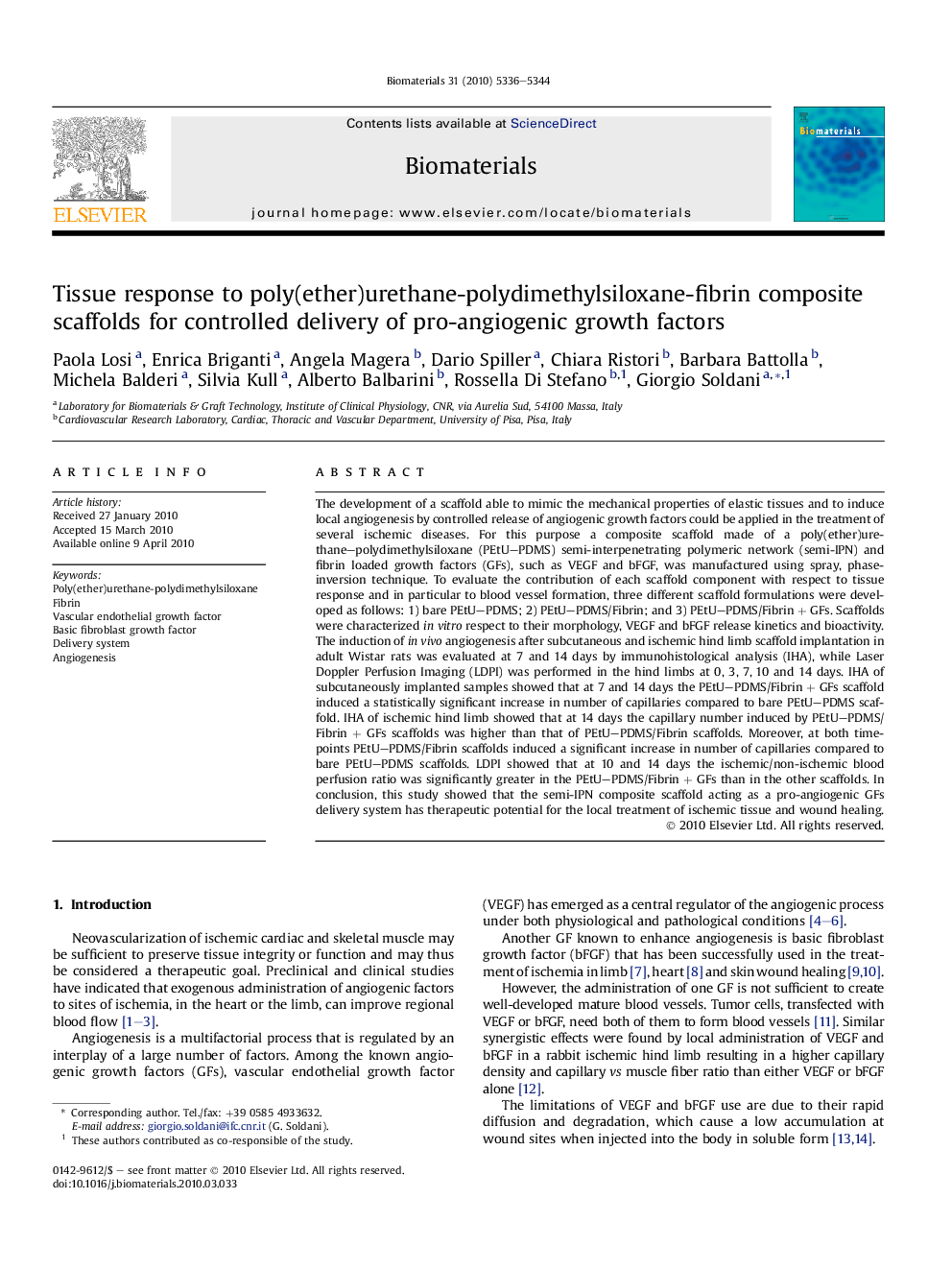| کد مقاله | کد نشریه | سال انتشار | مقاله انگلیسی | نسخه تمام متن |
|---|---|---|---|---|
| 8874 | 609 | 2010 | 9 صفحه PDF | دانلود رایگان |

The development of a scaffold able to mimic the mechanical properties of elastic tissues and to induce local angiogenesis by controlled release of angiogenic growth factors could be applied in the treatment of several ischemic diseases. For this purpose a composite scaffold made of a poly(ether)urethane–polydimethylsiloxane (PEtU–PDMS) semi-interpenetrating polymeric network (semi-IPN) and fibrin loaded growth factors (GFs), such as VEGF and bFGF, was manufactured using spray, phase-inversion technique. To evaluate the contribution of each scaffold component with respect to tissue response and in particular to blood vessel formation, three different scaffold formulations were developed as follows: 1) bare PEtU–PDMS; 2) PEtU–PDMS/Fibrin; and 3) PEtU–PDMS/Fibrin + GFs. Scaffolds were characterized in vitro respect to their morphology, VEGF and bFGF release kinetics and bioactivity. The induction of in vivo angiogenesis after subcutaneous and ischemic hind limb scaffold implantation in adult Wistar rats was evaluated at 7 and 14 days by immunohistological analysis (IHA), while Laser Doppler Perfusion Imaging (LDPI) was performed in the hind limbs at 0, 3, 7, 10 and 14 days. IHA of subcutaneously implanted samples showed that at 7 and 14 days the PEtU–PDMS/Fibrin + GFs scaffold induced a statistically significant increase in number of capillaries compared to bare PEtU–PDMS scaffold. IHA of ischemic hind limb showed that at 14 days the capillary number induced by PEtU–PDMS/Fibrin + GFs scaffolds was higher than that of PEtU–PDMS/Fibrin scaffolds. Moreover, at both time-points PEtU–PDMS/Fibrin scaffolds induced a significant increase in number of capillaries compared to bare PEtU–PDMS scaffolds. LDPI showed that at 10 and 14 days the ischemic/non-ischemic blood perfusion ratio was significantly greater in the PEtU–PDMS/Fibrin + GFs than in the other scaffolds. In conclusion, this study showed that the semi-IPN composite scaffold acting as a pro-angiogenic GFs delivery system has therapeutic potential for the local treatment of ischemic tissue and wound healing.
Journal: Biomaterials - Volume 31, Issue 20, July 2010, Pages 5336–5344